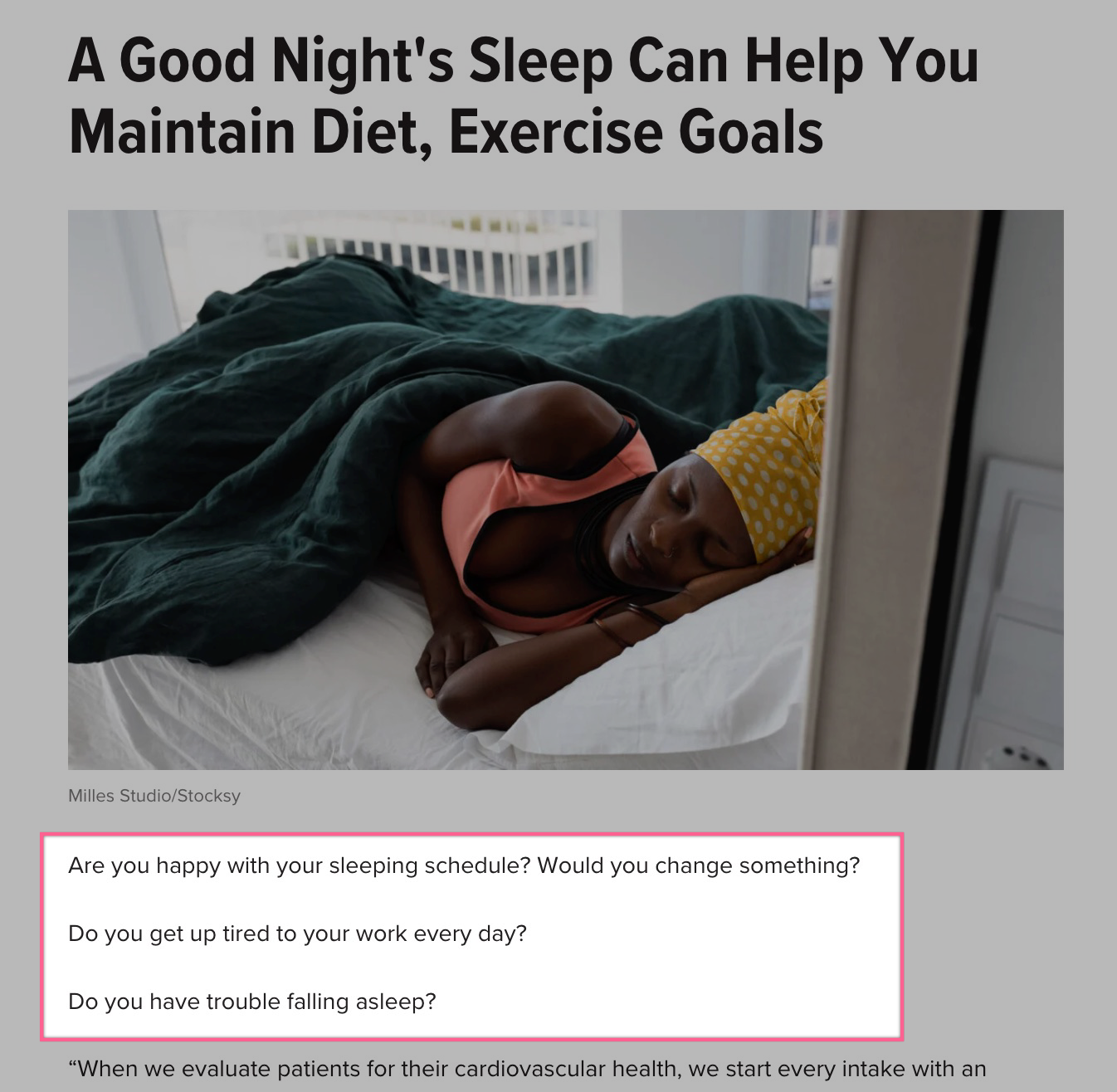How to Write Great Blog Post Introductions (and why most are bad)
The headline sells clicks, but an introduction sells the read.
And we see so many good writers making the same old mistakes.
I clearly remember the early days of optimizing content for Google over twenty years ago (yes, I really have been part of this industry for that long!). Back then many content writers felt that sticking your keyword into your opening paragraph half a dozen times was all that mattered.
But today is a very different world. Did you know that according to a recent study, we humans now have an 8 second attention span? That means that…
…sorry, what was I saying? Oh yes – keeping attention!
So, what are the secrets to capturing and retaining the attention of your audience for longer than it takes for a Google to generate a single results page?
In this article, we’ll share our go-to five-step plan for creating compelling blog post introductions. And if you’ve made it this far, then you already know it’s working!
Let’s examine four common mistakes you can be forgiven for making, how to never make them again, and five practical ways to write great blog introductions. Every. Single. Time.
What Should Your Blog Post Introduction Achieve?
In short, your blog post introductions should achieve three things:
- Introduce a new perspective on a topic.
- Set the expectations for what the reader will learn.
- Excite readers and give them a compelling reason to keep reading.
Your introduction should not only achieve these three things, but do so with brevity. And with so much AI-generated beige nonsense, it doesn’t hurt to throw in a little humor and a little humanity.
We’ve all started reading an article and quickly realized it was written by AI because of the sheer lack of soul, humor, or personal take on the subject. As content writers, we need to embody the very essence of the ‘I am not a robot’ trope and make it clear we’re real, and genuine, and talking directly to YOU, dear reader! (No one else – this is just between the two of us, yes?)
Crippling Mistakes That Are Killing Your Introductions
What’s the one biggest mistake that so many content writers make when creating blog introductions?
It’s about ice cream. It’s being vanilla. It’s being safe, bland, generic.
It’s about not being Maple Bacon Crunch, Spicy Mango Tango, or Rose & Pistachio ice cream.
Following in the footsteps of a million previous copywriters will only help to deepen the well-worn ruts in the tired old paths.
That’s simply not good enough.
Today, it is vital to stand out, be different, and be unique…
…and here are our four ways to avoid the most common blog post introduction mistakes:
#1: Making It Too Long-Winded
Lengthy blog introductions are dreadful. Readers want you to get to the point.
They’ll lose interest if you go on a tangent before getting into the meat and potatoes of the post. Don’t bury the lead – get to the main point quickly to avoid losing readers.
#2: Not Addressing Pain Points
People type in a search query to solve a problem – finding the best tech equipment, working more efficiently, or eating healthier.
Ensure you immediately address their need, identify their pain point, and highlight your article’s relevance to their direct question.

#3: Lacking Structure
Think of your favorite stories. Every plot has an arc, usually a hero’s journey, where the character is introduced, experiences adversity, and then must overcome their problem.
Blog introductions must also have a coherent structure that is easy to follow.

Talk about the specific problems your readers are likely to be experiencing. Show the reader that you fully understand their situation to create a better connection, and show them a solution – your blog.
This is one of the most effective ways to structure your introductions.
#4: Providing Nothing New
Readers want new information – something they don’t already know. Even if it’s a relatively non-controversial topic, it’s important to place a twist on it. Readers want your honest opinion.
Providing your honest opinion or experience builds credibility and trust, motivating readers to listen to what you have to say.
The introduction mistakes above will scare away your readers for life. You absolutely must avoid making those mistakes – doing this alone will ensure your blog introductions beat 99% of the competition.
Our Blog Post Introduction Formula
There’s no secret hack that magically writes persuasive copy.
However, there are frameworks you can follow to help guide your writing. We’ve broken down the introduction writing process into four parts.
Try this four-part formula when writing your next introduction, and watch your readership stats skyrocket.
1. Opener
Start your intro with a line or two that immediately grabs the visitor’s attention.
If you’re struggling to come up with an invigorating first sentence, wait until the draft is ready. It’s best to take a unique angle that plays off the content.
Here’s an example of a compelling opener that gets to the heart of the post:

The writer puts himself in the reader’s shoes and empathizes with them since struggling with writing samples is a common challenge for many new writers.
This shows readers you care about them and genuinely understand their pain points, which helps you connect with them better.
2. Problem
You must create interest by accurately (and concisely) describing the issue your readers will likely be facing – and then get to the root cause of their problem.
The introduction below provides an example of that, nicely elaborating on the problem from the opener.

This helps readers relate to the problem, compelling them to keep reading. You want them to say to themselves, “Yes, I hate this. It happens to me all the time.”
You must make readers aware of their pain points and help them understand the scale of the issue.
3. Solution
Calling out the problem creates a gap between where consumers want to be and where they are now. The next step is to sell your guide/post as the solution to their problem.

The solution should be something that your blog aims to explain.
Notice in the extract below how the writer describes the end result (crafting the perfect writing sample). The writer discusses how crafting the perfect writing sample will help you land your dream job.

4. Expectations
Lastly, you’ll want to tell readers what they’ll get from reading your blog post. Don’t turn this into a long sentence describing how you’ll talk about X, Y, and Z.
Instead, keep it punchy and move on to your first header.
For instance, check the example intro below.

It’s brief, yet it tells the reader everything they can expect to learn and motivates them to keep reading. There is no fluff, and there is no redundant information with zero value.
5 Tips to Write Spell-Binding Blog Introductions
You’ve only got one shot to make a great first impression – don’t waste your opportunity. Here are five must-follow tips to get your introductions to the next level.
1. Address Your Readers
Your introduction must be hyper-personalized and tailored to your readers. If you fail to make an immediate connection, your readers will leave. Personalization is critical.

Source: Outgrow
We live in a fast-paced era. We don’t have time to waste on irrelevant posts.
That’s why you must provide the most relevant information to your readers as quickly and easily as possible. So, before you even write a single word, take the time to create a simple avatar or persona that details who exactly it is you’re writing for.
For example, if you’ve got a blog that provides tips on how to take better photos using a DSLR camera, it would be hugely valuable to take a moment to create a customer avatar that’s something like this:

Source: Stratwell
By understanding your customers fully, as though they were a very real individual, you can deliver the most relevant answers to their questions. This lets you speak directly to your reader’s goals and aspirations.
Let’s say you’re using the avatar above. You can speak to their goals and aspirations of finally being able to take great landscape photos while on the road.
You can easily find out this information by:
- Conducting market research
- Interviewing existing customers
- Leveraging customer surveys
Once you know your readers, you should talk to them directly using words such as “you” and “your”. This direct use of language creates a more personal bond with your audience since it feels like you’re speaking directly to them.
2. Paint a Picture
Create a short story or situation, and guide your readers through it. This will immediately hook them into your content – our brains can’t resist a great story.

Source: CDB
Typically, it’s a relevant scenario that exaggerates the problem that most people experience. This helps to create vivid imagery for the reader, making them feel an emotion, such as stress or fear, directly tied to the problem or paint point they’re experiencing.
You can see an excellent example of that in the introduction below.

The key is to describe the problem in detail and really paint the picture.
Talk about their struggles, endless hours of writing, editing, publishing – and seeing no results. You must connect with your readers on an emotional level. Also, the narrative helps to agitate the problem, making it feel more painful.
As a result, the reader is more likely to take action by continuing to read the blog post and solve the reader’s problem.
3. Avoid Rhetorical Questions
Content marketers love to tell you to start your blog with a question. Unfortunately, this only makes readers associate your post with scammy, door-to-door salespeople.
Look at this example blog post on weight loss. It asks too many unnecessary rhetorical questions.

Instead, it’s better to come up with something new (or look at a problem from a different perspective) and provide value with useful benefits. By asking questions to your readers, you provide no value.
(Which gives them no reason to keep reading.)
4. Take a Stance.
Introductions are a lot more compelling when they take a stance, ideally one that’s controversial. Here’s an example of an opening from an article on how to lose weight.

The writer takes a contrarian’s point of view by saying that most advice lacks scientific evidence.
They follow up on that controversial sentence by providing a promise that tells you they have a solution that backs up their statement with actual science.
You can easily replicate this strategy by giving an opinion about something that annoys you in your industry.
For instance, in the weight loss niche, there’s a lot of “pseudoscience” with little to no real evidence. If you can identify a common assumption or misconception within your own industry or niche, this could provide an opportunity for an attention-capturing introduction (especially if you can back this up with a shocking or surprising statistic or quote).
5. Present Interesting Stats or Quotes
Statistics or quotes reinforce your primary statement, allowing your readers to gain trust.
The idea is to draw social proof from credible sources so that your information seems just as trustworthy. For instance, if you’re giving diet tips and you’ve presented facts from WebMD or the CDC, your information will be perceived as more credible.
See below for an example of how this introduction weaved the statistics into the blog. The article discusses how to write customer case studies and uses a statistic highlighting customer reviews’ importance for increasing sales conversions.

Quotes should follow the same principle. They can help illustrate your point and increase your credibility and industry authority.
The screenshot below shows how the writer used a quote as their opening line. This helps set up the transition to discuss why headlines are the key to catching the reader’s attention.

Final Thoughts
Of course, no matter how catchy your title, how attention-grabbing your first sentence is, how eloquently you tap deep into your readers’ pain points, and how well-structured your introduction is – there are a few ground rules to keep in mind.
Spelling & Punctuation
Perhaps your creative juices are pouring out of your head like a veritable Niagara Falls, but your fourteen thumbs are stabbing at the keyboard like hungry chickens in the dark. Spelling or typing errors can completely destroy any sense of authority or professionalism you want to communicate.
Don’t fret over your typing while the creative thoughts are bubbling away, but always take time afterward to review what you’ve written carefully. Use a spellchecker, and if you’re unsure whether ‘logorrhea’ has two r’s or one, use a dictionary. Plugins and online tools (such as Grammarly) can help spot mistakes like these, too.
Sentence Length
Use short sentences occasionally. But then break up any potential for your sentences to give the impression that you’re repeatedly punching your reader in the ear by using a longer sentence. Rhythm and pace matter. Vary your sentence length and structure. Don’t create sentences that are overly long or complicated, with so many sub-clauses you’ll need to provide your readers with a map to help them reach the period at the end. Variety. That’s the key.
And if you want an example of how this works – re-read that previous paragraph.
Vocabulary
So you came across a really good new word the other day, one you had to look up in a dictionary because you’d never seen it before? Don’t be tempted to sneak it into every blog post in an effort to make you sound highly intelligent and sophisticated. Keep it simple.
But having said that, we’re all guilty of having favorite words – ones we use over and over again, often without realizing it. This can be difficult to spot yourself, so having someone else read your work and help you to identify these words will help. For example, perhaps everything is ‘important’ when you’re writing? You may feel that emphasizing a key point is helped by identifying it as ‘important’.
But after a while, words like this lose their impact. They become dull, gray, and largely ignored. So consider alternatives – crucial, critical, vital, essential, etc.
Proofreading
Once you’ve finished writing your blog, walk away. Turn your back on it for a while. Write something else, or do something else entirely. Then, return to your writing with fresh eyes. Don’t read it as though you were your own reader, though. You’ll simply read exactly what you thought you wrote rather than what’s actually there.
Proofreading is best done in three stages. Start by reading it slowly to check spelling, grammar, punctuation, and sentence structure. Then, try reading it out loud to see whether it flows properly and is written naturally. Then, read it from the point of view of your reader needing a solution – think about overall structure and organization.
After Action Report – Start Writing Better (And Improving Old) Introductions
Now, you’ve got all the ingredients to write killer blog post introductions – you can finally say goodbye to the dreaded blank page syndrome.
Write confidently, knowing you have a system to follow.
Reel readers in with an introduction that makes them want to keep reading.
And now that you know how, why not take the time to revisit some of the existing blog posts you’ve written? The chances are you’ll find a good number of easy improvements you can make to each of your introductions to package your guide, resource, or post up as something anyone who lands on it will want to read.
👋 Looking for input from a team that’s worked with category-leading companies – possibly like yours? We’re here and always happy to help! Use the contact widget in the bottom right-hand corner to get in touch or apply to work with us here.







